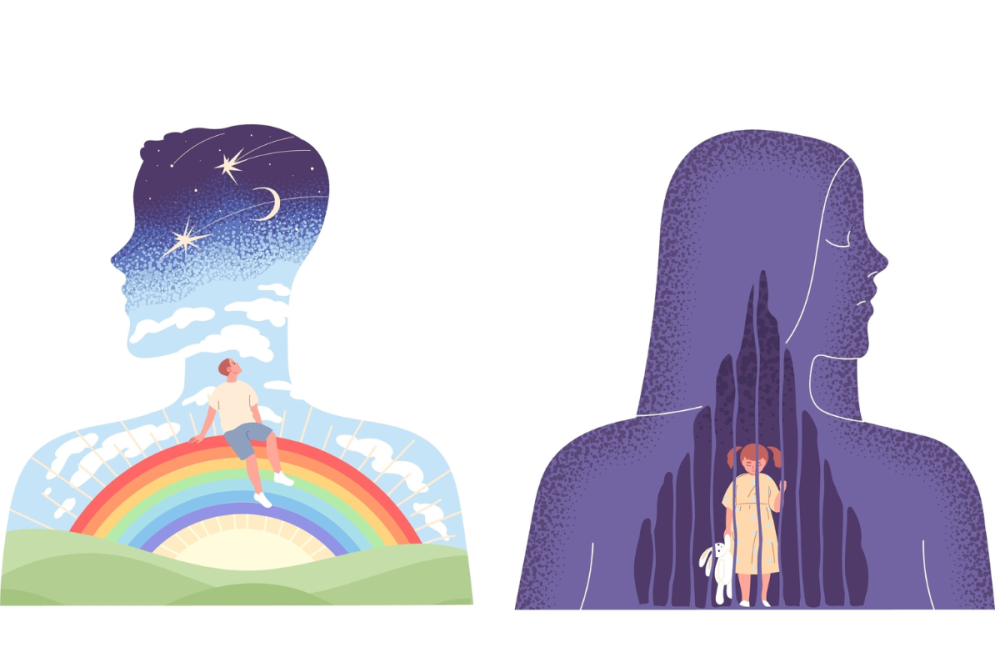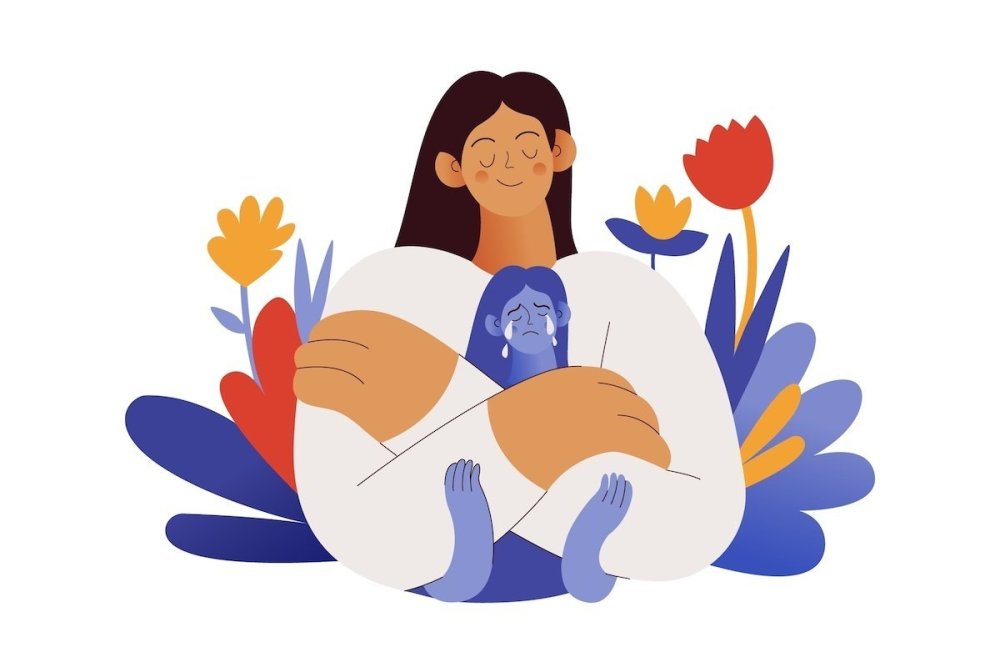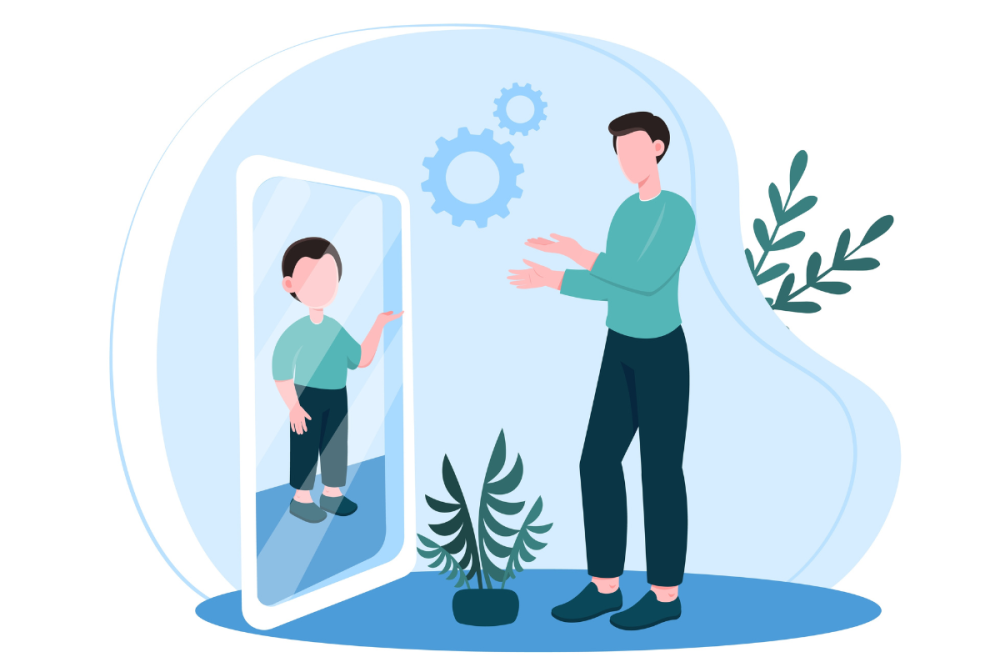Healing your wounded inner child takes dedicated work and patience. So, how can you tell if you're succeeding? Psychologist Stanislava Puač J. explains the key signs that your inner child is healing, from choosing healthier relationships to responding instead of reacting.
Healing the child within can feel elusive and vague at first. Even a little scary. Yet, as you move through the inner child work of listening to and caring for that younger Self, the signs your inner child is healed begin to emerge.
It is rarely a dramatic overnight transformation – more of a rewiring behind the scenes. The inner tension starts to soften. Old triggers lose their grip. Bit by bit, you realize that inside of you, there’s now a healed inner child.
So, how do you know if it’s working? And how long does it take to heal your inner child? Before we dive in, let’s pause to remember what healing the child within actually means and why it's important to embark on this journey.
Healing the Child Within
Healing your inner child involves reconnecting with the parts of yourself shaped by childhood experiences — especially painful or unmet emotional needs — and offering them the care they needed but didn’t receive. But why dig out past hurts in the first place?
According to psychological research and practice, unhealed childhood wounds tend to cause extensive adversities in adult life, leading to issues such as abandonment trauma. They affect our mental well-being, relationships, and even physical health and longevity.

There are many signs your inner child is being healed
Luckily, as a recent study by Trivedi, et al published in The International Journal of Regression Therapy shows, an intervention aimed at healing your inner child, “effectively improves participants’ mental health [...]. Moreover, the data show that the positive effects tend to be more pronounced with a longer duration of the intervention”.
Whether your inner child work involves therapy, journaling techniques, or using visualization and reparenting techniques, the path is rarely linear. But progress does leave footprints: here are some of the signs your inner child is healed.
9 Signs You’re Healing Your Inner Child
A healed inner child doesn’t come to you with a memo saying: “Woohoo, everything’s perfect!” Nonetheless, if you have walked the path for a while, you will start noticing the signs your inner child is healed (or getting there).
For me, it was when I realized I wasn’t entering a full panic mode when a man sitting next to me in public transportation started shouting (which would typically be a massive trigger). My healed inner child entered the stage as quietly as that.
If you notice some of these signs your inner child is healed, take heart: change is unfolding.
1. You Respond Instead of Reacting
Like my personal example above, specific triggers used to make you spiral into shame or lash out. Yet, now, you manage to pause before reacting. You recognize where the emotion comes from, accept it’s there, and choose how to respond. This is one of the most prominent sings your inner child is healed, because it means your childhood hurts no longer take over whenever you hit a bump on the road.
2. You No Longer Abandon Yourself to Keep Peace
The moment you choose yourself over what others (or internalized others) expect you to be, everything changes. Carl Jung, the Swiss psychotherapist and psychologist, spoke about this.
“Healing the child within can feel elusive at first. Yet, as you listen to and care for that younger Self, the signs your inner child is healed begin to emerge.”
And a key marker of a healed inner child is precisely the ability to honour your needs and peculiarities. You are no longer willing to disappear just to keep the peace and avoid making waves.
3. You Feel Comfortable with Healthy Boundaries
A natural continuation of the previous sign your inner child is healed is setting healthy boundaries. Your boundaries no longer resemble walls – nor are they non-existent. Nowadays, you have doors with locks you choose to open (or not). When you’re healing the child within, you begin to set boundaries from a place of self-respect.
4. You Can Self-Soothe Instead of Spiral
Another vital sign your inner child is healed is when you stop spiralling into ruminating thoughts. Instead of incessantly asking yourself: “Did I do something wrong? Will they still like me if I say no?”, you now reach out for comforting behaviors, such as journaling, conscious breathing, music, and movement. You can now soothe your inner child from the position of a kind, attuned caregiver.

A healed inner child will sooth instead of spiral
5. You Reclaim Joy and Playfulness
When we live as adults with a hurt inner child, we tend to be overly adapted and efficient. In a sense, we’re a bit too adult. There’s little room for spontaneity.
RELATED: What Playfulness Can Do For Your Relationship
The moment you start letting yourself be silly and creative, you probably carry a healed inner child inside. Why? That freedom to play signals that the inner child feels safe enough to come out again.
6. You Sit Happily With Your Feelings
Healing doesn’t mean you stop feeling blue or angry. But, unlike before, when you wouldn’t trust your emotions, you start acknowledging and validating them. You no longer feel the need to either suppress or dramatize your feelings to be taken seriously.
7. You Attract (or Choose) Healthier Relationships
We tend to repeat the patterns from our family of origin. Unfortunately, if these were unhealthy, you have likely picked the wrong people to surround yourself with.
Nonetheless, as you start healing your inner child, you begin to expect kindness and honesty from others. And you grow the capacity to give and receive healthy love.
“The most profound sign your inner child is healed comes with a quiet sense of worth that doesn’t waver based on productivity, appearance, or approval.”
What's more, a 2024 study by Loo Yee Hing from the International Grafinity Association of Malaysia revealed that such healing can be built upon further. A program aimed at healing the inner child among parents resulted in “transformation [that] was characterized by heightened self-awareness, improved emotional regulation, improved parenting skills and strategies, strengthened parent-child relationship that foster a suitable relationship”.
8. You Let Go of Harsh Self-Criticism
Your inner critic’s voice has softened. Instead of cruel remarks about how incompetent you are when you make a mistake, you catch yourself offering self-compassion. That shift from punishment to patience and understanding signals your adult Self is making decisions about who and how worthy you are — and not the people who hurt you when you were a child.

Dropping self-criticism: one sign your inner child is healing
9. You Know You’re Worthy – Even When You Struggle
Finally, the most subtle yet profound sign your inner child is healed comes with a quiet sense of worth that doesn’t waver based on productivity, appearance, or approval.
You now judge your worth and have integrity and an identity grounded in self-awareness and recognition of both your strengths and weaknesses.
How Long Does It Take to Heal Your Inner Child?
If you’re wondering how long it takes to heal your inner child, you’re not alone. It’s a common question, and a fair one.
Unfortunately, you’re not going to receive a definite response. As with any self-development work, the road you need to travel before you live with a healed inner child varies. It is your personal path, and it's impossible to say what to expect in general.
One friend told me he felt a massive improvement after only two therapy sessions. Most people begin to feel major shifts in a matter of months. Others walk this path for years. It all depends, among other factors, on:
- The severity of childhood trauma and adverse experiences you’re trying to heal
- Your current support system
-
Consistency of your healing practices
So, rather than aiming for a finish line, it’s more helpful to think in terms of layers.
For example, you may heal the outer layer rather quickly, one that is tied to your self-confidence. And then, you might discover a deeper layer around trust or intimacy. Therefore, think about moving in an upward spiral, and peeling one layer after the other.
Takeaway: Signs Your Inner Child is Healing
Healing the child within is one of the most powerful journeys you can take. It’s as close as you can get to changing your past.
No, wrongdoings won’t get undone. But you will transform how your past lives in you. And no, the transformation most likely won’t feel dramatic. Yet, you will wake up one morning, realizing that you have quietly become less anxious, kinder, and more in touch with the world and yourself; that you have shown up for yourself in ways no one else could. ●
Images: shutterstock/Undry, shutterstock/dot.studio, shutterstock/Edge Creative
happiness.com | The fine art of being: learn, practise, share
Are you a happiness.com member? Sign up for free to enjoy:
■ our happiness magazine with practical life tips
■ sharing and supporting others in our happiness forum
Written by Stanislava Puač J.
 Stanislava Puač J. is a psychologist, life coach, and writer with over 15 years of experience exploring how our inner world shapes our interactions, health, and sense of self. Her work blends research, real-life practice, and a holistic view of well-being – spanning emotional regulation, communication, and mindfulness.
Stanislava Puač J. is a psychologist, life coach, and writer with over 15 years of experience exploring how our inner world shapes our interactions, health, and sense of self. Her work blends research, real-life practice, and a holistic view of well-being – spanning emotional regulation, communication, and mindfulness.


Join the conversation
You are posting as a guest. If you have an account, sign in now to post with your account.
There are no comments to display.